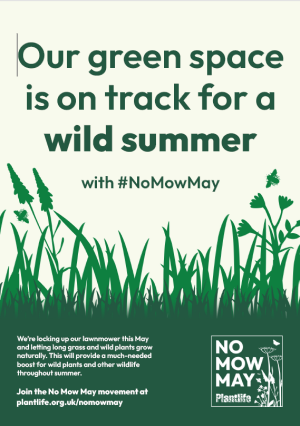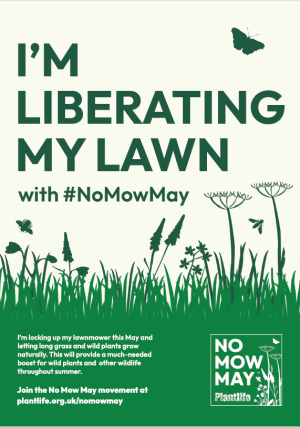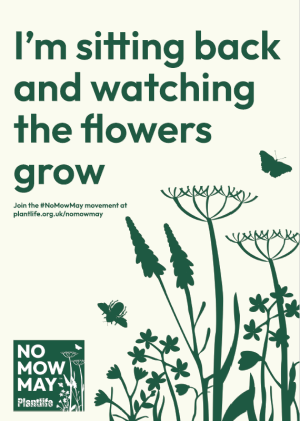
We’ve lost nearly 97% of flower rich meadows since the 1970’s and with them gone are vital food needed by pollinators, like bees and butterflies.

A healthy lawn with some long grass and wildflowers benefits wildlife, tackles pollution and can even lock away carbon below ground – and best of all, to reap these benefits all you have to do is not mow your lawn in May!

With over 20 million gardens in the UK, even the smallest grassy patches add up to a significant proportion of our land which, if managed properly, can deliver enormous gains for nature, communities and the climate.
Information from the Plantlife website
The 10 most common plants recorded during the campaign last year were daisies, creeping buttercup, yellow rattle, common bird’s-foot trefoil, field forget-me-not, meadow buttercup, white clover, common mouse-ear, oxeye daisy and dandelion.
Bird’s-foot trefoil is a rich sort of food for 140 insect species! Even the humble dandelion is loved by bumble bees.
Read more about last year’s survey in this article in The Guardian
Find our more about No Mow May and join in on the Plantlife website

